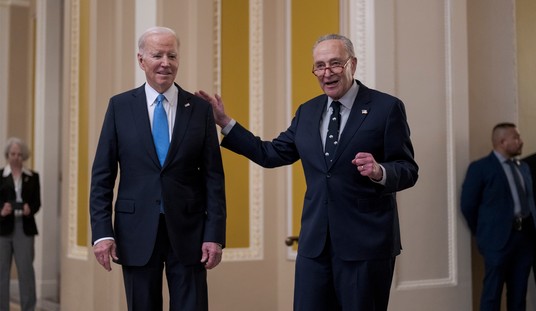I have never understood the affection for “Imagine,” John Lennon’s least-imaginative pop hit. The music is dull and dreary, the lyrics a paean to an utterly childish Utopianism, and practically a prescription for surrender. At least “Power to the People” imagined that people could change the world. The ballad that many consider to be Lennon’s best work in his career did nothing but dream that all dissent and individual perspective would drain magically from the human race so that we could all live in peace, or perhaps a boredom-induced stupor. It’s existential nonsense to which it’s not even terribly pleasant to listen, let alone contemplate.
I accept that I’m firmly in the minority on this point, which was driven home when a performer had the gall to adjust one line in the song to fit his own personal childish Utopianism on New Years Eve, and get castigated for a kind of secular heresy:
Cee Lo Green upset John Lennon fans on Saturday night by performing a soulful version of the songwriter’s classic “Imagine” with the lyrics changed from “nothing to kill or die for / and no religion too” to “nothing to kill or die for / and all religion’s true.” According to some fans, Green changed the meaning of the song by switching out the line. “The whole point of that lyric is that religion causes harm,” tweeted someone with the handle @geekysteven. “If ‘all religion’s true’ it would be a pretty bleak place.”
No more so than imagining no heaven, I’d argue. Frankly, if I liked the original, I’d be more irritated with Cee-Lo’s vocal rendition than with the change of lyrics. There’s a certain amount of irony, as one atheist wrote, in Cee-Lo’s presentation, too:
Cee-Lo Green claims that he was merely attempting to be tolerant and inclusive, but his alteration is anything but tolerant and inclusive and it is also nonsensical (especially since he sung the part about no Hell below us and above us only sky). But what can we expect from someone who sings, “Imagine no possessions” while wearing a fur coat.
As a matter of fact, all religions believe that they are in possession of “the Truth” and yet none have presented any valid evidence for their claims. Most religions conflict with each other at the core and their value on faith rather than evidence leaves believers with no independent way of judging which religion(s) if any is actually true. The only way to settle the matter is often through violence and a quick history of religion supports this very problem. John Lennon understood that and that was one of the main themes of the song.
Well, atheism hasn’t proven itself either; it’s a belief in no God at all. The only approach based on objective proof would be agnosticism, not atheism. As for religions causing violence, perhaps the author in this case should familiarize himself with the histories of the explicitly atheist communist nations in the 20th century for a better understanding that violence comes from human nature, not religious belief.
Besides, remakes don’t ruin songs. Anyone who wants to hear the original recording of “Imagine” can, unfortunately, hear it just about everywhere on the radio, as well as buy a copy for replay at any time. I’ll just keep changing the channel when it starts playing on my stereo.
What do you think of “Imagine”? Take the poll:
Update: From the comments, what do you get when you cross the instrumental from “Imagine” and the vocals from Van Halen’s “Jump”? A much duller version of “Jump,” really:







Join the conversation as a VIP Member